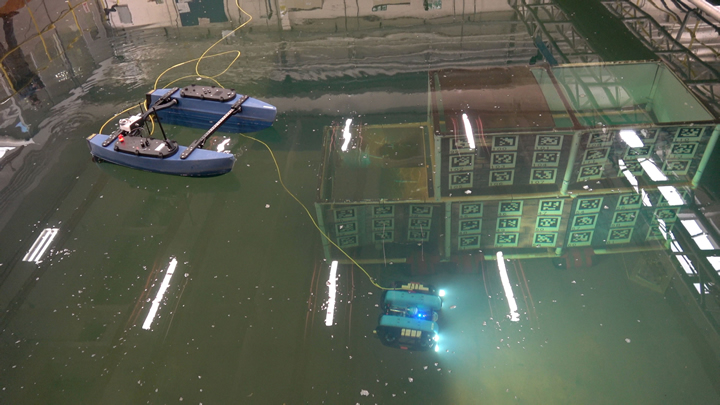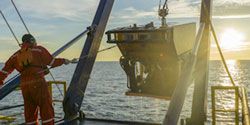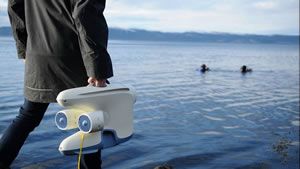AI to enable autonomous underwater robots to perform precision offshore wind farm repairs
The project's technological advancements could dramatically reduce the need for large maintenance vessels in offshore wind farm operations, supporting a shift towards fully remote operations.
Subsea Technologies: Optical Components in Deep Waters
Here, Knight Optical dives into the world of subsea technologies and runs through the optical components that are used to guarantee their high performance.
In Search of a Lost Veteran
The largest submarine of WWII has been sitting on the bottom of the ocean off the Japanese coast for 70 years. Researchers finally found the lost wreck with the aid of an underwater robot - and Swiss drive technology.
Deepest Underwater Consumer Drone from Blueye Robotics Reveals Ocean Depths Previously Unseen by Non-Scientists
Blueye Pioneer Dives to 150 Meters; Robust, Stable HD Camera Delivers True Colors with Super-Clear Image Quality
One Step Closer to the Seafloor - New Underwater Robotic Vehicle Tested in Guam
Schmidt Ocean Institute brings the Ocean to the public through its latest underwater vehicle SuBastian.
OpenROV Trident Pre-orders
From OpenROV:
OpenROV Trident Features:
Depth: Capable of 100m (will ship with a 25m tether - longer tethers will be sold separately)
Mass: 2.9 kg
Top Speed: 2 m/s
Run Time: 3 hours
Connectivity
The data connection to Trident is a major evolution from the connection setup of the original OpenROV kit. It uses a neutrally buoyant tether to communicate to a towable buoy on the surface (radio waves don't travel well in water) and the buoy connects to the pilot using a long range WiFi signal. Using a wireless towable buoy greatly increases the practical range of the vehicle while doing transects and search patterns since a physical connection between the vehicle and the pilot doesn't need to be maintained. You can connect to the buoy and control Trident using a tablet or laptop from a boat or from the shore... (preorder $1,199.00)
Records 1 to 6 of 6
Featured Product

PI USA - Gantry Stages for Laser Machining and Additive Manufacturing
High performance gantry systems, from PI, are used in precision assembly, laser machining, and additive manufacturing. Complete with software and state-of-the-art EtherCat® motion controllers. Easy to program, easy synchronization with lasers and dispensers. Standard and custom, compact systems and large, granite-based units.
Robotics and Automation - Featured Company

MMP Inc. / MIDWEST MOTION PRODUCTS, INC.
The Leader in Rapid Prototyping of High-Quality Motion Control Solutions. MMP is actively engaged in the design, manufacturing and distribution of standard and custom motion control equipment, including fully reversible brushed and brushless DC gearmotors, motors with failsafe brakes and servomotors with feedback devices such as analog tachometers and encoders. We also provide fully-sealed IP-65 motor speed controls @ 12/24/48 VDC, AC~DC power supplies and a wide variety of 12/24 VDC linear actuators. If you need a sample right away, we can be a project saving convenience for you. We provide more than 8000+ released DC Gearmotor designs with cost-effective solutions for robotics and automation companies. These designs are unique and custom-built to suit the specific application requirements of the motion control projects.





